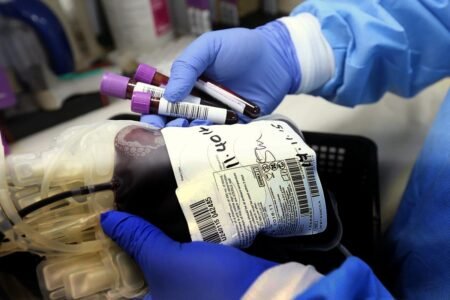As of 26 May, new EU rules on medical devices (MDR) enter into application, establishing a modern and more robust regulatory framework to protect public health and patient safety.
Advertisement
1. Why is there a need for new rules on medical devices?
The EU rules on the safety and performance of medical devices were created in the 1990s. To reflect the substantial technological and scientific progress in this sector over the last 20 years, the Commission has proposed to update the rules to improve the safety of medical devices, with a view to modernise the sector and to consolidate the EU’s role as a global leader in this area.
The Medical Devices Regulation entered into force in May 2017 and becomes applicable on 26 May 2021. This transition helped to avoid market disruptions. Several transitional provisions are in place until 2025.
The Medical Devices Regulation seeks to ensure a high level of public health and patient safety taking into account scientific progress. It will also reduce the administrative burden for companies and public authorities. It is complemented by the Regulation on in vitro diagnostic medical devices with a date of application on 26 May 2022.
2. What are the main benefits for patients?
There are more than 500,000 types of medical devices in the market and most people will need to use a medical device at some point in their lives. Medical devices range from simple contact lenses and sticking plasters to sophisticated pacemakers and hip replacements.
The new Regulation paves the way for a more patient-friendly environment, where transparency and patients’ information and choice are a priority, and where patients can benefit from innovative, high-performing devices and new therapies.
The new rules contain a number of improvements, including:
- stricter ex-ante control for high-risk devicesvia a new pre-market scrutiny mechanism with a pool of experts at EU level;
- reinforcement of the criteria for the designation and oversight of Notified Bodies (a ‘Notified Body’ is an independent third party conformity assessment body) more info below;
- inclusion of certain aesthetic devicesthat present the same characteristics and risk profile as analogous medical devices under the scope of the regulation;
- improved transparencythrough a comprehensive EU database on medical devices (EUDAMED) more info below;
- a traceability system based on a unique device identifier (UDI);
- introduction of an ‘implant card’for patients containing information about implanted medical devices;
- reinforcement of the rules on clinical evidence, including an EU-wide coordinated procedure for authorising multi-centre clinical investigations;
- strengthening of post-market surveillancerequirements for manufacturers;
- improved coordination mechanismsbetween EU countries on vigilance and market surveillance;
- a robust financial compensation mechanism to ensure patients are compensated for damage caused by defective devices.
3. Which products are affected by the new regulation?
In line with the current system, all medical devices and their accessories fall under the new regulation. In addition, certain aesthetic products such as coloured contact lenses or equipment for liposuction that need to be just as safe as existing medical devices will also be covered following the adoption of common specifications for these products through adoption of a Commission implementing act.
Under the new Regulation, medical devices are divided into four risk classes. Depending on the risk class of the product, a different conformity assessment procedure is foreseen before the product can be placed on the EU market. In case of medium or high risk classes, Notified Bodies might be involved in the process.
4. Will the new rules be able to keep up with future progress?
The Medical Devices Regulation contains very important changes to the current system to enable the sector to produce safer and more innovative devices and help address future challenges. The new Regulation contains many provisions to increase security and regulatory certainty, e.g. harmonised rules on drug-device combination products, tissue engineering, nanoscience, personalised medicine, substance based devices and genetic tests and take into account the latest developments in the sector (medical software, apps, cybersecurity). The Regulation on in vitro diagnostic medical devices applicable from 26 May 2022 will apply the same principles.
To help boost innovation in the sector, the EU-wide database on medical devices (EUDAMED), supported by a new device identification system based on a unique device identifier (UDI), will make big sets of data in the field of medical devices available within the EU. By producing more innovative devices, medical device manufacturers will also be able to offer solutions for disease prevention or early diagnosis that will in turn make the healthcare sector more affordable, for example, by helping to prevent or reduce hospitalisation.
5. Will medical devices that were certified under the old rules have to reapply?
It is crucial to ensure that the new rules enter into application without creating disruption of vital medical devices supply. The Commission, competent Authorities, Notified Bodies and all other stakeholders have worked closely together since 2017 to ensure that the transition to the new regime is as smooth and successful as possible. In addition, the Regulation stipulates that certificates issued under the previous Directives can remain valid until May 2024 at the latest.
6. How will the new Regulation make medical devices safer?
The new rules strengthen the governance and market surveillance of medical devices. They introduce:
- a Medical Device Coordination Group (MDCG) composed of national experts and chaired by the European Commission that will offer advice and assistance on the legal framework;
- increased cooperation between Member States in the field of vigilance and market surveillance;
- a mandatory coordinated assessment of multinational clinical investigations.
As a result, a true European governance structure has been put in place for medical devices. It will allow the more frequent exchange of information, so regulatory decisions by either Member States or the European Commission can be taken on a more informed basis. Under this new governance, safety issues can be addressed quickly whenever required and appropriate.
7. What will be the role of Notified Bodies?
Medical devices are not subject to a pre-market authorisation by a regulatory authority. Medium and high-risk devices require a conformity assessment procedure, involving an independent third party known as a ‘Notified Body’.
Notified Bodies used to be designated and monitored by the Member States and acted under the control of the national authorities. In 2013, joint assessments of Notified Bodies were introduced, with members from other Member States and the Commission involved in the designation procedure. Under the new framework, the successful experience of the joint assessments is reinforced.
Under the new Regulation, independent experts could be required to provide an opinion to the Notified Body on certain high-risk products before the final decision on the certification of the product is taken. This will help a Notified Body to make more informed decisions and stimulate a process of continuous learning. It will help drive innovation while preserving a high level of safety and performance of products.
8. How will the scrutiny mechanism for assessment of high-risk devices work?
For certain high risk devices (such as cardiac stents or hip implants), the new Regulation requires the Notified Bodies to consult with an expert panel before issuing a certificate of conformity allowing the placement of the device on the market. According to this procedure, an expert panel could provide a scientific opinion to the Notified Body on its assessment of the manufacturer’s clinical file. While the Notified Body would not be bound by the opinion, it would have to provide a justification for not following it.
9. What are the rules on reprocessing single-use devices?
Some devices are intended to be discarded after they have been used once. However, under properly controlled conditions some such devices can be safely reused.
The Regulation on medical devices contains minimum requirements on the reprocessing of single-use devices. Reprocessing may only take place when permitted under national law and in accordance with the provisions of the medical devices Regulation. When reprocessing is permitted, the entity that wants to reprocess the device must assume the same obligations as a manufacturer. However, by way of derogation the Member States may decide to apply a different regime in the case of reprocessing by health institutions and by third parties on the request of health institutions. Such a regime includes compliance of reprocessing with common specifications which were adopted by the Commission in the form of an Implementing Regulation adopted in August 2020.
10. What are the rules for products without an intended medical purpose listed in Annex XVI of the Medical Devices Regulation?
The medical device legislation is applicable for the first time also for products without an intended medical purpose such as coloured contact lenses, equipment for liposuction, lasers for hair removal, brain stimulators etc., to ensure a high level of protection and safety.
The Regulation will be applicable to these kinds of products as soon as common specifications that address, at least, the application of risk management to the group of products in question, are adopted through an implemented act.
11. Does the regulation address the use of nanomaterials in medical devices?
The new Regulation on medical devices lays down a dedicated classification rule for devices incorporating or consisting of nanomaterials. The critical factor is the potential for nanomaterials which can be released inside the body. Those devices presenting a high or medium potential will fall under the highest risk class and thus be subject to the most stringent conformity assessment procedures.
12. What is the state of play on the medical devices database, EUDAMED?
EUDAMED will provide an overview of all medical devices available in the European Union. It will be composed of six modules related to: actor registration, unique device identification (UDI) and device registration, notified bodies and certificates, clinical investigations and performance studies, vigilance and market surveillance. It will integrate different electronic systems with information about medical devices and related companies (e.g. manufacturers).
The development of EUDAMED is progressing, with first EUDAMED module on actor registration made available in December 2020. The Commission is continuing to work in close cooperation with Member States on this highly complex project and we plan to release of the Unique Device Identification & Device Registration module as well as the Notified Bodies and Certificates module in the second half of 2021. The Commission is currently, in collaboration with Member States, looking into the possibility of a gradual release of the remaining modules.
13. Why was the application of the Medical Devices Regulation postponed by a year?
The decision to postpone the date of application of the Medical Devices Regulation by one year from 26 May 2020 to 26 May 2021 was adopted by the European Parliament and the Council on the proposal of the Commission. The objective was to allow all key players – Member States, health institutions and economic operators to give priority to the fight against the coronavirus pandemic. The amendment took into consideration the need for increased availability of vitally important medical devices across the EU, and at the same time continued to guarantee patient health and safety.






